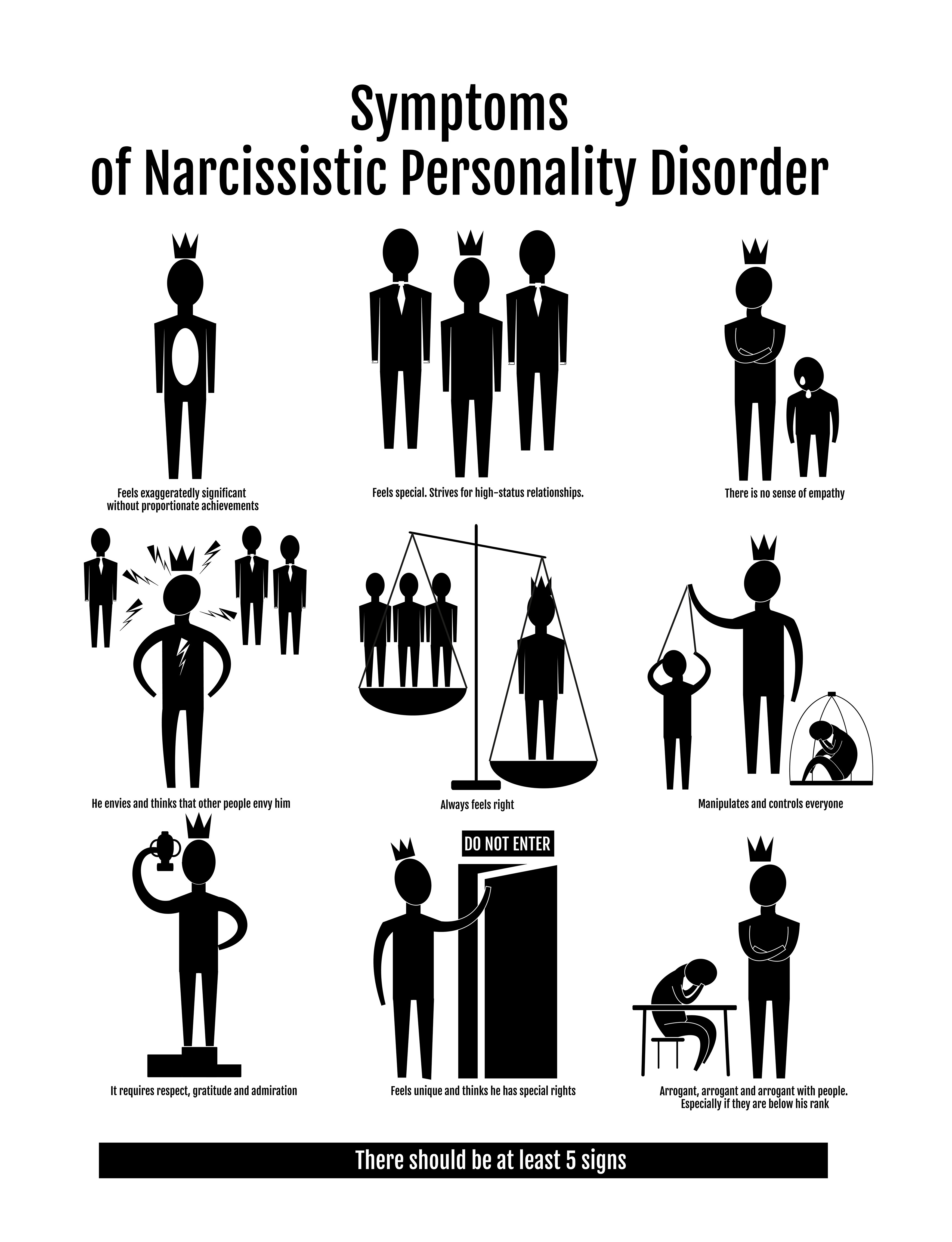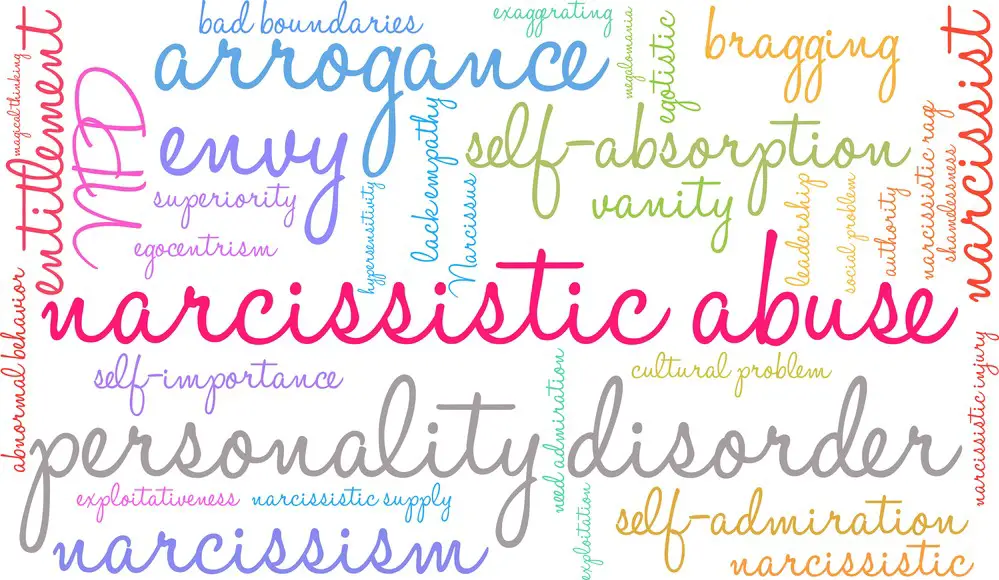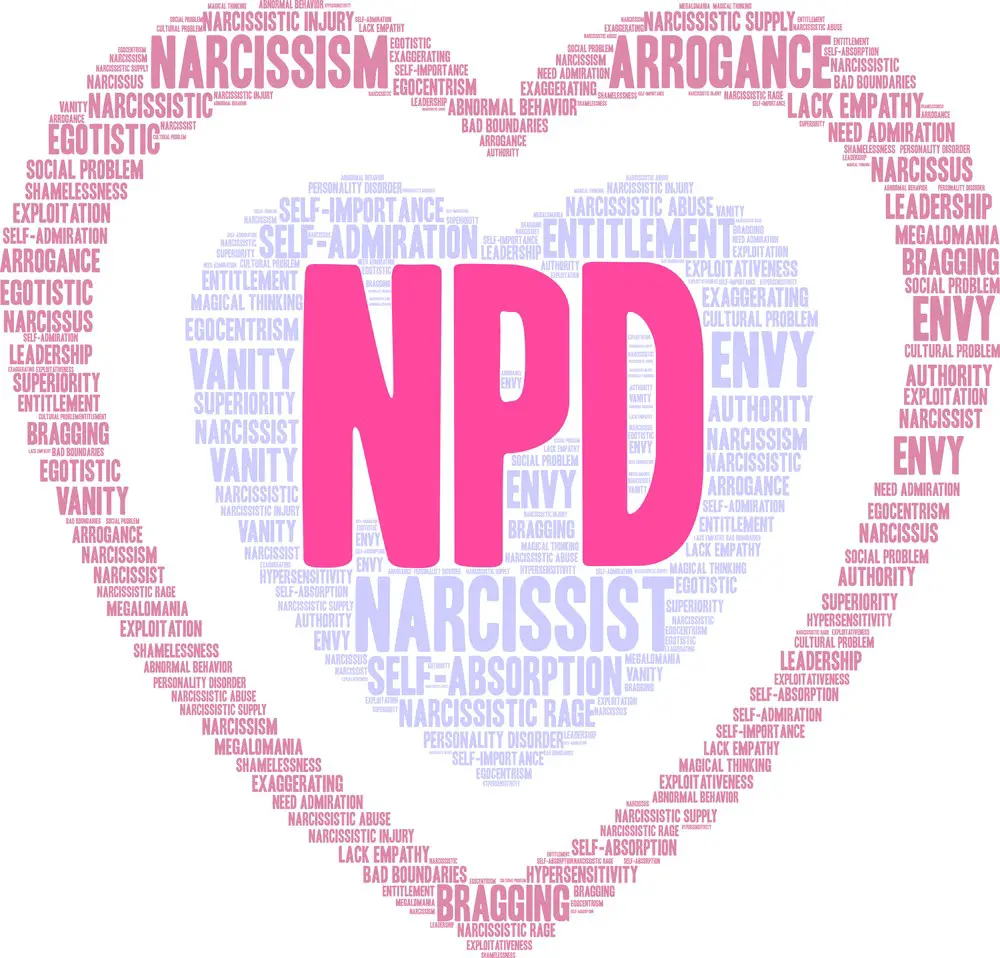Narcissistic mirroring is a manipulative tactic employed by individuals with narcissistic personality disorder (NPD) to establish and maintain control within relationships. This psychological phenomenon can damage the targeted individual, leaving them feeling manipulated and emotionally drained. As people become more aware of this manipulative behavior, it is crucial to comprehend how and why narcissistic mirroring occurs.
In a relationship with a narcissist, their partner may often experience a sense of constant validation and emotional support during the initial stages. However, this is only a façade the narcissist employs to win their partner’s trust and admiration. As the relationship progresses, the narcissist’s true colors begin to show, leaving the partner confused and emotionally unstable. By understanding the mechanics behind narcissistic mirroring, individuals can better recognize and protect themselves from toxic relationships.
Key Takeaways
- Narcissistic mirroring is a deceptive tactic used by those with NPD to control their partners.
- The initial stages of a narcissistic relationship involve intense validation, later leading to manipulation and emotional turmoil.
- Recognizing and understanding narcissistic mirroring can help individuals protect themselves from toxic relationships.
Understanding Narcissistic Mirroring
Narcissistic mirroring is a behavior often exhibited by individuals with narcissistic personality traits. It involves the narcissist imitating or reflecting another person’s emotions, preferences, and actions to create a sense of closeness or connection. This tactic manipulates others and makes them feel seen, validated, and understood.
People with narcissistic tendencies use mirroring to win over others and make them feel special. For instance, they may take on similar hobbies, display the same emotional reactions, or mimic body language. This strategy allows the narcissist to gain trust, establish rapport, and fulfill their desires.
Recognizing that not everyone who mirrors another person is a narcissist is essential. Mirroring is a natural human behavior that helps build empathy and understanding between individuals. However, when performed by someone with narcissistic tendencies, this behavior becomes insidious and deceitful.
An important aspect of uncovering narcissistic mirroring is to watch for inconsistencies in the narcissist’s behavior. They may demonstrate extreme enthusiasm about shared interests one day, only to exhibit indifference or contempt for the same topics later. This inconsistency can reveal a hidden agenda at play.
To protect oneself from the effects of narcissistic mirroring, it is crucial to maintain healthy boundaries and trust one’s instincts. If something feels off or too good to be true, it may be worthwhile to investigate further and critically evaluate the situation.
In summary, narcissistic mirroring is a manipulative tactic used by individuals with narcissistic traits to connect with others in a seemingly genuine way. By recognizing the signs and maintaining strong boundaries, one can safeguard themselves against falling prey to this deceptive behavior.
Mirroring Techniques
Speech and Communication
Narcissistic mirroring involves adapting one’s speech patterns, diction, and tone of voice to match the person they are trying to connect with. This technique creates a sense of rapport, enabling the narcissist to gain trust and manipulate the relationship. Mirroring language includes:
- Diction: Adopting similar vocabulary and phrasing as the other person.
- Tone of voice: Mimicking the person’s vocal pitch, rhythm, and tempo.
- Breathing: Synchronizing one’s breathing pattern with the other person.
Body Language and Facial Expressions
Another important aspect of narcissistic mirroring is matching one’s body language and facial expressions to those of the targeted individual. This creates a sense of connection, drawing the person into the narcissist’s sphere of influence. Examples of body language mirroring include:
- Posture: Copying the other person’s stance, shoulder position, and overall posture.
- Gestures: Replicating hand movements, fidgets, and other nonverbal cues.
- Facial expressions: Imitating the targeted person’s facial reactions, such as smiles, frowns, or raised eyebrows.
Interests and Values
To further establish rapport, a narcissist might mirror the interests, beliefs, and values of the person they seek to manipulate. This will often involve:
- Interests: Pretending to share hobbies, passions, or favorite pastimes.
- Beliefs: Mimicking religious, political, or personal opinions.
- Values: Professing similar life priorities, morals, and ethical standards.
It is essential to remain alert for signs of narcissistic mirroring in relationships, as these techniques can be deceitful and manipulative, seeking to exploit connections for personal gain.
Reclaim Your Relationship with Regain
The Narcissistic Relationship Cycle
Idealization and Love Bombing
At the beginning of a narcissistic relationship, the narcissist engages in love bombing. They shower their partner with excessive attention, affection, and praise during this stage. This creates an illusion of a perfect relationship and builds a strong emotional bond. The narcissist projects an idealized version of themselves and their partner, leaving the victim feeling special and loved.
Devaluation
As the relationship continues, the narcissist starts the process of devaluation. They may suddenly become critical, distant, or both. Their once-loving comments are replaced with insults, and their attention shifts to other people or interests. The victim starts feeling inadequate and may cling to the relationship, hoping to regain the idealized love they experienced initially. This stage is marked by confusion and pain for the partner as they struggle to understand the sudden change in their loved one’s behavior.
Discard Phase
The final stage of the narcissistic abuse cycle is the discard phase. At this point, the narcissist deems their partner no longer useful or worthy, and they will begin to detach themselves. This can happen abruptly or slowly, filled with manipulative tactics such as gaslighting and silent treatments. The victim is often left feeling bewildered, heartbroken, and questioning their self-worth.
Recovery and Future Faking
The narcissistic relationship cycle is not always linear and can involve a stage known as future faking. The narcissist may return to their partner with promises of change and a seemingly improved outlook. They may use this tactic to regain control or as a way to discard their partner on their terms.
Recovery from a narcissistic relationship requires understanding the cycle of abuse and recognizing the manipulation tactics used. The victim needs to seek support from friends, family, or professional therapists to heal from the emotional damage inflicted by the narcissist. Remembering to prioritize self-care and set healthy boundaries can also aid recovery and prevent future entanglement with a narcissistic partner.
The Manipulative Intent of Narcissistic Mirroring
Narcissistic mirroring is a common manipulative tactic individuals with narcissistic personality traits use. The main goal of this behavior is to gain control and power over their target. They achieve this by imitating the target’s emotions, interests, and behaviors to establish a false sense of connection and trust.
This strategy of manipulation serves several purposes. First, it allows the narcissist to disarm their target, making it easier for them to exert control and influence over them. By mirroring the target’s emotions and behaviors, the narcissist demonstrates an ability to empathize, which may lead the target to believe that the narcissist genuinely cares about them and their well-being.
However, the empathy displayed by the narcissist through mirroring is typically hollow, as they mainly seek attention and admiration from their target. This attention reinforces the narcissist’s false sense of superiority and fuels their need for power and control.
Another aspect of narcissistic mirroring is the covert narcissist’s approach to manipulation. Unlike their overt counterparts, covert narcissists use subtle tactics to gain control and influence over their target. They may appear shy or reserved, but their ultimate goal is the same: to manipulate and exploit others for personal gain.
The abuse that stems from narcissistic mirroring can be incredibly damaging to the target, as they may not recognize the manipulation or control exerted by the narcissist. It is crucial for individuals who suspect a narcissist is targeting them to educate themselves on the signs of narcissistic abuse and seek support from trusted sources.
In summary, narcissistic mirroring is a powerful manipulative tactic used by individuals with narcissistic traits to control and exploit others. Potential targets need to be aware of the deceptive nature of this technique and seek help when necessary to protect themselves from potential emotional and psychological harm.
Narcissists and Empathy
Narcissists often struggle with empathy, which can interfere with their ability to form true intimacy with others. Empathy is essential in building trust and understanding emotions in relationships, but narcissists tend to lack this natural human ability.
A critical aspect of empathy is the ability to recognize and respond to the emotions of others intuitively. However, narcissists typically exhibit a superficial understanding of emotions, which hinders their ability to connect with others on a deep level. This lack of empathy is not always apparent, as narcissists may engage in temporary acts of kindness or affection to create a false sense of intimacy. In many cases, their actions become self-serving methods of manipulation, often with little regard for the other person’s emotional well-being.
True intimacy requires mutual trust and vulnerability, which are difficult for narcissists to achieve. Developing a genuine emotional connection with others is hard since they prioritize their self-interest and maintain an inflated self-image. This lack of true intimacy, in turn, can harm relationships and perpetuate the narcissist’s self-serving behaviors.
While their ability to relate to others genuinely and empathetically may be limited, narcissists can still demonstrate empathy when it suits their needs. Nevertheless, this emotional connection is often shallow and temporary, falling short of the meaningful bond that forms the foundation of healthy relationships.
In summary, the absence of empathy in narcissists directly affects their capacity to form deep, lasting connections with others. Trust, intimacy, and genuine emotional vulnerability are essential components of healthy relationships, and these elements are rarely, if ever, present in the narcissist’s life. Their lack of empathy can lead to destructive patterns and an inability to experience true intimacy with others.
Take Control of Your Relationship with Regain
Healthy Mirroring vs. Narcissistic Mirroring
Healthy mirroring is essential to human interaction, validating and supporting one’s character. It involves the empathetic and genuine reflection of another person’s emotions, thoughts, and actions, helping them to grow and develop a strong sense of self. Healthy mirroring is kind and compassionate, allowing individuals to feel seen and understood.
On the other hand, narcissistic mirroring is a manipulative tactic employed by individuals with narcissistic tendencies. Rather than genuinely reflecting the other person’s emotions, narcissistic mirroring serves as a mask to mirror the other person’s emotions and behavior to gain their trust or admiration. This type of mirroring is not authentic and focuses primarily on the narcissist’s needs rather than those of the other person.
The main difference between healthy mirroring and narcissistic mirroring lies in the intention behind the behavior. In healthy mirroring, the aim is to create a supportive and validating environment for the other person, helping them to grow and develop emotionally, mentally, and socially. In contrast, narcissistic mirroring is self-serving and manipulative, with the primary intention of maintaining control over the other person.
Understanding these differences is crucial in identifying the appropriate type of mirroring in one’s interactions. By recognizing the signs of narcissistic mirroring, such as constant attention-seeking behavior, a sense of entitlement, and a lack of genuine empathy, one can navigate relationships with greater awareness and protect oneself from emotional manipulation.
How to Recognize and Deal with Narcissistic Mirroring
Narcissistic mirroring is a manipulative tactic used by individuals with narcissistic traits. It involves copying the victim’s behaviors, actions, and even aspects of their identity. This creates a false sense of understanding and a bond with the victim. The primary aim is to control and manipulate the other person’s sense of self.
Recognizing narcissistic mirroring can be challenging, as it often starts subtly. It might include mimicking how the victim dresses, talks, or even adopting their interests. The narcissist may also use information gathered about the victim to make them feel they profoundly understand their life. This can create an illusion of a soulmate connection, further deepening the victim’s attachment to the narcissist.
Dealing with narcissistic mirroring requires self-awareness and a firm understanding of one’s identity and sense of self. By being mindful of their actions, the victim can better recognize when a relationship dynamic feels off or uncomfortable. Reflecting on shared interests and behaviors, it’s crucial to determine if these aspects of the relationship are genuine or manipulative tactics.
To address narcissistic mirroring, the victim can take several steps:
- Maintain clear boundaries: Establishing and reinforcing personal boundaries help preserve a sense of self and prevent further manipulation.
- Seek support: Talking to friends, family, or a mental health professional can provide an objective perspective on the relationship.
- Do not engage in manipulation: Ignoring the narcissist’s attempts at control can help disengage from potentially harmful situations.
- Prioritize self-care: Nurturing personal well-being and focusing on individual growth can help victims rebuild their sense of self and confidence.
In summary, recognizing and dealing with narcissistic mirroring involves vigilance and self-awareness. Identifying manipulative behaviors, setting boundaries, seeking support, and focusing on self-care can empower the victim to regain control and maintain a healthy identity.
Narcissistic Personality Disorder
Narcissistic Personality Disorder (NPD) is a mental health condition characterized by an inflated sense of self-importance, a deep need for admiration, and a lack of empathy for others. Individuals with NPD often build a facade to mask their insecurities and seek to associate with those they consider to be of high status or value.
A key trait of individuals with NPD is their desire to be admired and perceived as the perfect partner. They engage in narcissistic mirroring, a tactic used to build and maintain an idealized self-image. This involves copying the interests, beliefs, and behaviors of those they admire, creating a false sense of intimacy and emotional connection.
In relationships, people with NPD might project a fantasy of the perfect partner onto their romantic interests. This projection may not be sustainable, often leading to disappointment and disillusionment. As the relationship progresses, the individual with NPD might begin to devalue their partner, causing emotional distress and manipulation to maintain their control and superiority.
It is important to understand that NPD is a disorder, and the individual might not be aware of their behavior or its impact on others. Recognizing the signs of NPD and seeking professional help can lead to healthier, more fulfilling relationships.

Helping Victims of Narcissistic Abuse
Helping victims of narcissistic abuse can be challenging for caregivers, family members, colleagues, and even mental health professionals. It is essential to approach this issue with a confident, knowledgeable, neutral, and clear perspective.
Victims often experience a wide range of emotions, such as guilt, due to the manipulative tactics employed by their abuser. Creating a safe and confidential environment where they feel comfortable sharing their experiences is crucial to successfully support these individuals.
As a caregiver or support person, understanding that the victim might be bearing the role of the scapegoat in their family or social circle can help you build an empathetic connection with them. This understanding allows for a more effective approach when offering guidance or resources.
One way to assist victims of narcissistic abuse is to provide them with knowledge and information about the signs of narcissistic behavior. This can empower them to recognize when they are being manipulated, giving them greater control.
Another key aspect in helping victims of narcissistic abuse is to encourage them to set healthy boundaries with their abuser. This could involve limiting or ending contact if it serves their best interests. Additionally, encourage open communication with trusted family members, colleagues, or friends who can offer support and validation in this process.
Finally, connecting victims with professional resources, such as therapists or support groups, can be an essential step in their journey toward healing. These professionals have the expertise to guide clients through emotional upheaval and help them build resilience and self-esteem.
In conclusion, assisting victims of narcissistic abuse requires a sensitive, well-informed approach that considers their unique personal circumstances. Offering practical guidance, creating a safe space for discussion, and connecting them with appropriate resources, caregivers, family members, and colleagues can play a vital role in these individuals’ healing journey.
Frequently Asked Questions

How can you identify narcissistic mirroring?
To identify narcissistic mirroring, look for signs of excessive mimicry or a pattern of copying others’ thoughts, feelings, and behaviors. Common indicators include mirroring gestures, adopting others’ opinions, and regularly changing likes or dislikes to match those around them.
What occurs when mirroring a narcissist?
Mirroring a narcissist can lead to a complex and challenging interaction. As narcissists are masters of manipulation, they may use mirroring to gain trust and control. This experience can leave the other individual feeling confused, emotionally drained, and potentially doubting their perceived reality.
How does a covert narcissist mimic others?
A covert narcissist may mimic others by subtly adopting their mannerisms, speech patterns, hobbies, and interests. They do this to manipulate others and appear more relatable or desirable. Unlike their overt counterparts, Covert narcissists can be inconspicuous and difficult to identify.
Can mirroring be a form of manipulation?
Yes, mirroring can be a form of manipulation, particularly when used with ill intent. For example, individuals with narcissistic or manipulative tendencies may use mirroring to gain trust, create a false sense of connection, or exploit others. Genuine empathetic mirroring, on the other hand, is a positive aspect of human interaction, promoting mutual understanding and rapport.
What role does psychology play in mirroring?
Psychology plays a significant role in the concept of mirroring. At its core, mirroring is a psychological mechanism that fosters connection and social bonds. While individuals naturally mirror one another’s actions, expressions, and emotions, certain personalities, such as narcissists, may exploit this process for personal gain or manipulation.
Is unconscious mirroring a part of narcissism?
Unconscious mirroring is a natural human behavior not exclusive to those with narcissistic traits. However, narcissists may use more intentional mirroring forms for manipulative purposes, disguising their true intentions. When considering mirroring in the context of narcissism, it’s crucial to differentiate between unconscious mirroring – an innate behavior – and deliberate exploitation of this mechanism.
About Jacob Maslow
As someone who has experienced the effects of narcissistic manipulation tactics in a difficult custody battle, I understand the importance of recognizing and protecting oneself from these harmful behaviors. While I take Lexapro to manage my mental health, I’ve also learned strategies for dealing with narcissistic behavior and protecting myself and my children from its harmful effects.
Despite the ongoing court battle with my ex-partner’s severe case of narcissism and her complete alienation of our children, I remain committed to fighting for their well-being and doing what I can to manage my mental health. I take long walks daily to clear my head and focus on what’s important.
To provide support and guidance to others who may be facing similar challenges, I write articles about mental health and narcissism. I also have a legal site where I help others dealing with a spouse who refuses to comply with court orders and weaponizes their children rather than co-parenting. I hope to provide resources and strategies for recognizing and dealing with narcissistic manipulation tactics through legal action or personal growth and healing. With the right support and resources, anyone can overcome their mental health challenges and find a path towards healing and recovery.
- The Burnout Epidemic: Why We’re All Feeling Overwhelmed and How to Cope - February 9, 2024
- How to Live a Peaceful Life - February 9, 2024
- Useful Information You Should Know About Health Screenings - February 8, 2024
This site contains affiliate links to products. We will receive a commission for purchases made through these links.










